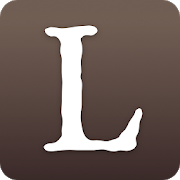Tenured professors are just built different or something. The object of the book is Copernicus’ “On the Revolutions of the Heavenly Spheres”, which Prof. Gingerich set out to see all extant versions of (first and second editions, that is), and to compile a list of them including who they belonged to over the ages, and of their respective annotations.
Some parts of the book were genuinely interesting, and a lot of it was bragging about travelling all over the world and meeting interesting people. I like anecdotes, but this was a bit much even for me. Like, there were several instances of “and here’s how my list helped convict art thieves”. There’s also a lot of in-group point scoring that I naturally didn’t care a lot for.
But some stuff was very interesting! Tracing book ownership by similar annotations (e.g. students copying their teacher’s annotations for future reference), and the widespread habit of annotating books directly, which is pretty cool and probably culturally related to the way medieval books were laid out. It was neat to see perspectives on Lutheran Wittenberg (particularly on Melanchthon, whom I always love to see plop up as more influential than people assume). I also always enjoy reading about 1500s Europe in general, and habits of travel, changing names (Offusius was also known as Offhuysen, Geldrensis after his home village and Vesalius after the closest significant town), writing letters, pandering to your (potential) patrons in your scientific publications, and backstabbing your opponents viciously through snide remarks that spread like wildfire in the intellectual community.
Apart from relatively well-known people like Melanchthon and Erasmus, the book also features people who I had vaguely heard of, but didn’t know more about. Rheticus and Andreas Osiander, Tycho Brahe (hilarious, I need to read more about him!), Christopher Clavius (need to read more about him, too! His chapel, his calendar reform), Paul Wittich, Petreius.
On Copernicus, the book doesn’t contain too much information, because we know surprisingly little. Only 17 letters of his survive, 15 of which deal with administrative cathedral business, one with currenc reform, and only one with astronomy (but not cosmology).
There’s a fair bit on the migration of books over the centuries: a lot went to Sweden with Gustav Adolf’s incursion during the 30 years war, others went to the SU after 1945 and were suddenly available for one or two years after 1990 before access was restricted again, and so on. Scotland has an extraordinary number of copies (6 in Edinburgh alone), and London off the charts. The first copies made it to China in 1618 by way of Jesuit missionaries. More surprisingly, the entire Oxford University Library was sold for scrap in the mid 1500s (?!?!), and the same happened with many other libraries. Some books (like the early Frankfurt book fair cagalogues) were hard to find simply because they were so complicated to catalog that nobody dared to do it, so they sat forgotten in library stacks.
Some stuff about early book printing and preservation was informative, and I’d love to see more about that: speculations on how many reams of paper an early print shop could produce (and things that influenced that – paper needed to be damp to be printed, so could you print both sides in one go without smudging? and so on). Preservation-wise, water is the absoute worst enemy of books (even worse, in numbers, than fire, though fire often leads to extreme water damage). Next up are book worms and rats, who can absolutely demolish books. Insight into the (then-)current bookselling market was also an interesting insight into a completely foreign world. Checking books to see if all or some of them are forged seems like a cool activity, though: Checking if holes or stains continue throughout, checking paper weight and markings for authenticity, and so on.
Even more interesting, there’s a bit about censorship! The book was on the Catholic Index, and ten sections had to be censored for it to be allowed reading. (They did want the accurate observations, so they didn’t ban the book entirely) But it turns out, in many cases, the book wasn’t censored at all outside Italy, even in very Catholic areas like France. (Or censored in such a way that reading the original passage was trivially possible).
Odd other knowledge I never knew I lacked: Jeremy Bentham, who died in 1832, had his remains be disected and put together again to be preserved (padded out with hay and complete with his clothes on), and is on constant display in the University College of London. And: Galileo learned about a Dutch spyglass that was sold as a new toy in major European cities, he figured out how it worked, and improved it onto a scientific instrument with which he discovered the craters on the Moon. And: Even early printers (or at least Petreius) already used paper with proportions of √2 to 1, just like current DIN formats, to make sure folding the paper got you the same proportions again.





